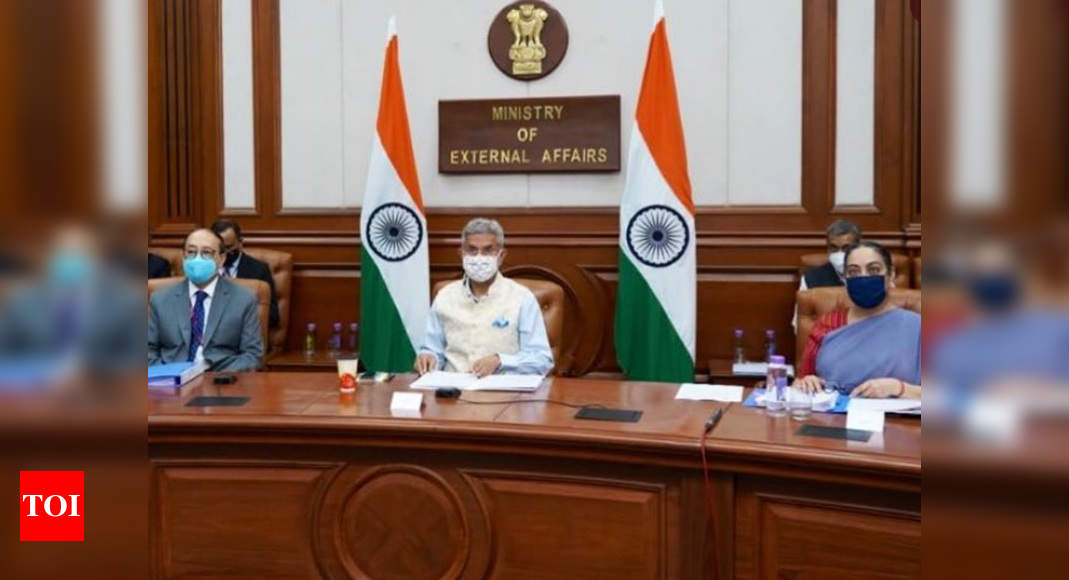A South Korean train heads North, but sanctions mean it has to carry its own fuel

The trip, which is part of a joint study to inspect the North's aged railway system, follows a series of summit meetings between the two countries' leaders earlier this year aimed at encouraging the North to abandon its nuclear weapons program.Any spare fuel left over from the trip will have to be hauled back to South Korea, to avoid the risk of inspectors breaching international restrictions on trading with the North. If those restrictions are lifted in the future, a connection between the two Korean rail systems could bring huge economic benefits to the peninsula, linking up North Korean factories with markets in the South, and giving South Korean exporters a faster route to China and Eurasia.South Korean President Moon Jae-in has long dreamed of building a trans-Korea railroad. During a speech last year, he promised that the "severed inter-Korean railway will be connected again," adding that one day, "a train departing from Busan and Mokpo will run through Pyongyang and Beijing, and head towards Russia and Europe." 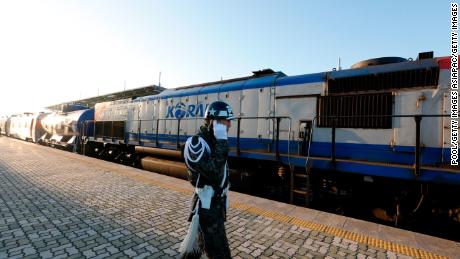
Inspection tour
A seven-car train left Seoul Station at 6:30 a.m. local time Friday, arriving at the border two and a half hours later. 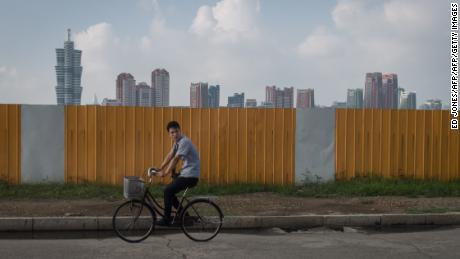 Proceeding slowly and carefully, inspectors are hoping to ascertain the state of the North Korean railways, and just how much money would be required to upgrade them to the point they could carry South Korean trains. According to South Korean officials, North Korea has over 5,226 kilometers (3,247 miles) of railway, compared to about 3,900 kilometers (2,423 miles) in the South. However, most of the North Korean routes operate as single track lines (meaning trains cannot pass each other) with an average speed of 40-50 km per hour (24-31 mph).South Korea's Korail estimated in 2012 the total cost of repairing the railways in North Korea at $210 million for the eastern line and $96 million for the western line, though these figures may have since grown due to ongoing lack of repair and the effect of sanctions.The trip will be the first time a South Korean train car has ever traveled along the North's eastern Donghae line from Mount Kumgang to the Tumen River. South Korean inspectors previously visited the North in 2007, to examine the Sinuiju to Kaesong section of the tracks, during a period of rapprochement. The new trip will travel from Kaesong to Sinuiju near the border with China, down to Pyongyang, Wonsan and Anbyon before a trip to the Tumen River and a final return via Wonsan, Pyongyang and Kaesong to Seoul. Im Jong-il, chief of the joint survey team, was also part of the 2007 inspection, which was carried out in the bitter Korean winter. "(It was) very cold. As we rode the train, we had to conduct our survey while occasionally dodging the train coming from the opposite direction, which was difficult," he told reporters. At least this time, the train is heated throughout, so inspectors can focus on looking at the tracks, rather than focusing on keeping warm. "The team members are experts in this field so they will be able to tell aging by plain sight for the most parts. The result will depend on how much the North Korean officials will show us," Im said.
Proceeding slowly and carefully, inspectors are hoping to ascertain the state of the North Korean railways, and just how much money would be required to upgrade them to the point they could carry South Korean trains. According to South Korean officials, North Korea has over 5,226 kilometers (3,247 miles) of railway, compared to about 3,900 kilometers (2,423 miles) in the South. However, most of the North Korean routes operate as single track lines (meaning trains cannot pass each other) with an average speed of 40-50 km per hour (24-31 mph).South Korea's Korail estimated in 2012 the total cost of repairing the railways in North Korea at $210 million for the eastern line and $96 million for the western line, though these figures may have since grown due to ongoing lack of repair and the effect of sanctions.The trip will be the first time a South Korean train car has ever traveled along the North's eastern Donghae line from Mount Kumgang to the Tumen River. South Korean inspectors previously visited the North in 2007, to examine the Sinuiju to Kaesong section of the tracks, during a period of rapprochement. The new trip will travel from Kaesong to Sinuiju near the border with China, down to Pyongyang, Wonsan and Anbyon before a trip to the Tumen River and a final return via Wonsan, Pyongyang and Kaesong to Seoul. Im Jong-il, chief of the joint survey team, was also part of the 2007 inspection, which was carried out in the bitter Korean winter. "(It was) very cold. As we rode the train, we had to conduct our survey while occasionally dodging the train coming from the opposite direction, which was difficult," he told reporters. At least this time, the train is heated throughout, so inspectors can focus on looking at the tracks, rather than focusing on keeping warm. "The team members are experts in this field so they will be able to tell aging by plain sight for the most parts. The result will depend on how much the North Korean officials will show us," Im said. 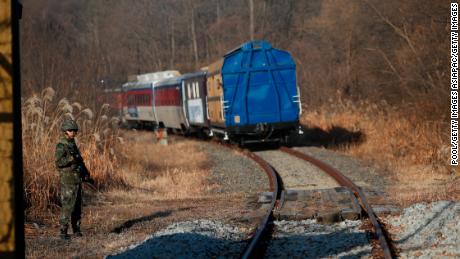
Sanctions headache
But while the two Koreas are steaming ahead in building stronger ties, the North remains subject to stringent international sanctions passed in response to its nuclear and missile testing. The Trump administration has also expressed caution at the prospect of South Korea pushing ahead with inter-Korean projects, maintaining that sanctions provide an important diplomatic tool in holding the North accountable. The team had to receive special permission from the United Nations to carry out the visit, and are under strict instructions to bring any leftover materials back to Seoul with them. 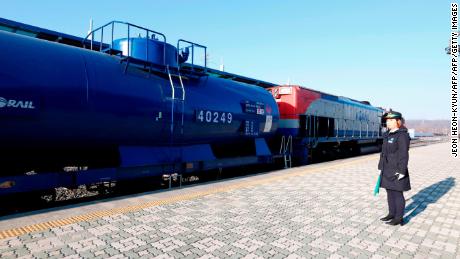 The sanctions have created a number of problems for the South Korean inspectors, who had to bring their own food, water and fuel, lest they breach sanctions by purchasing any from the North. The inspection team is also wary of the health risks posed by drinking or eating North Korean products. "At last survey (in 2007) there was a lot of bellyache. So we are bringing lots of water," project manager Ji Yong-tae said. A pool reporter who went on board the train before it departed said there were hundreds of bottles of water stacked in one of the compartments, adjacent to the two-meter-long sleeping pods where the inspectors will live for the next few weeks.
The sanctions have created a number of problems for the South Korean inspectors, who had to bring their own food, water and fuel, lest they breach sanctions by purchasing any from the North. The inspection team is also wary of the health risks posed by drinking or eating North Korean products. "At last survey (in 2007) there was a lot of bellyache. So we are bringing lots of water," project manager Ji Yong-tae said. A pool reporter who went on board the train before it departed said there were hundreds of bottles of water stacked in one of the compartments, adjacent to the two-meter-long sleeping pods where the inspectors will live for the next few weeks.
Original Article
[contf] [contfnew] 
CNN
[contfnewc] [contfnewc]

